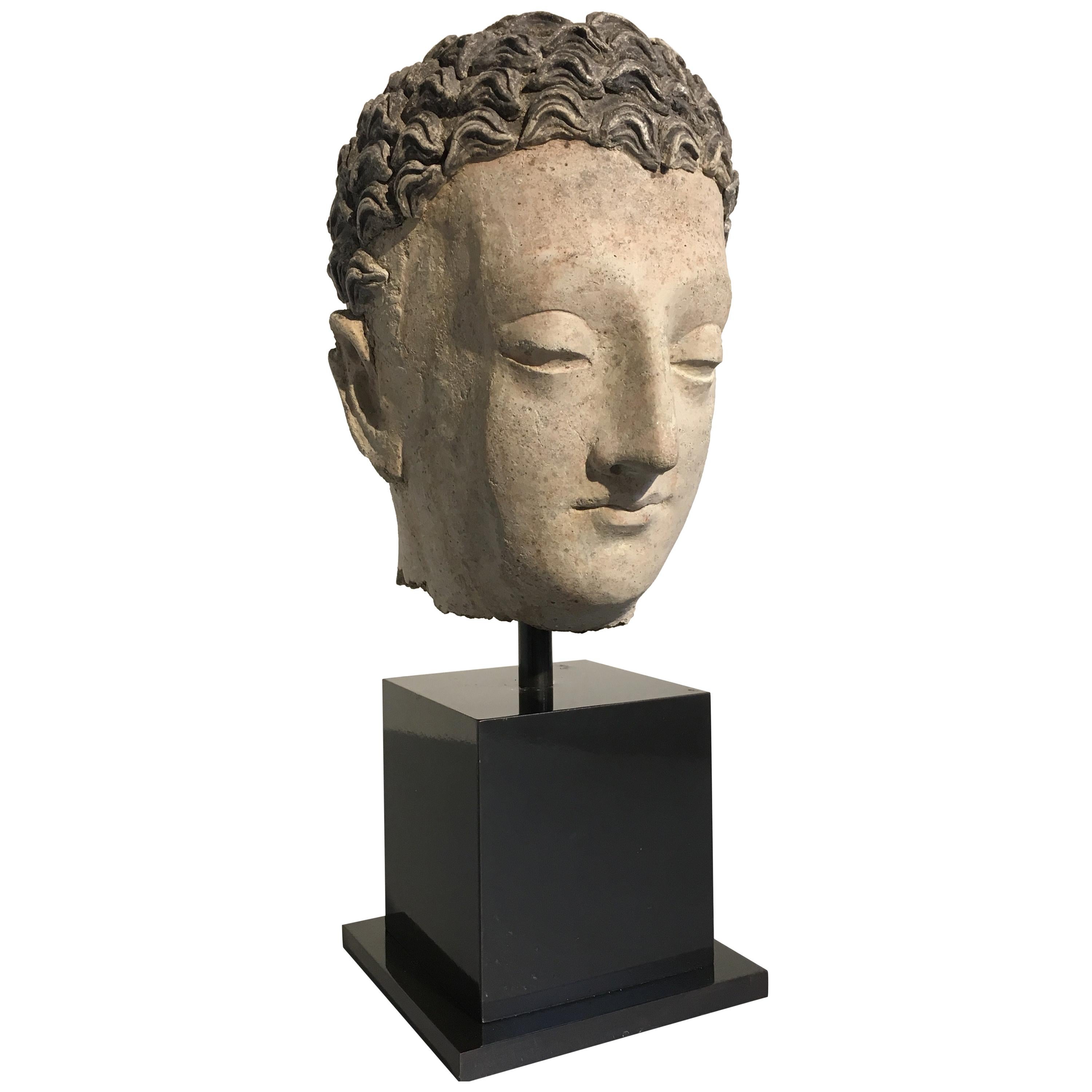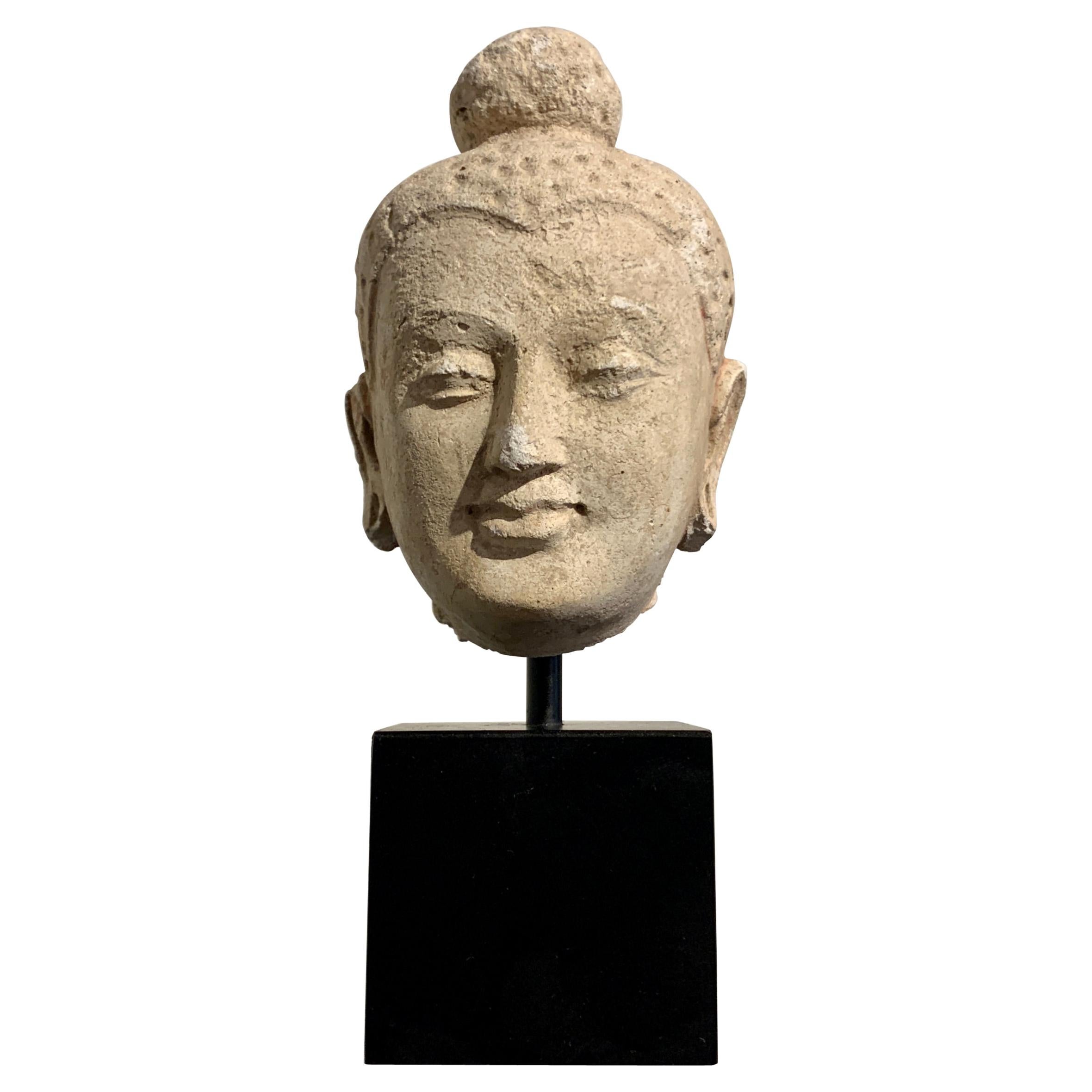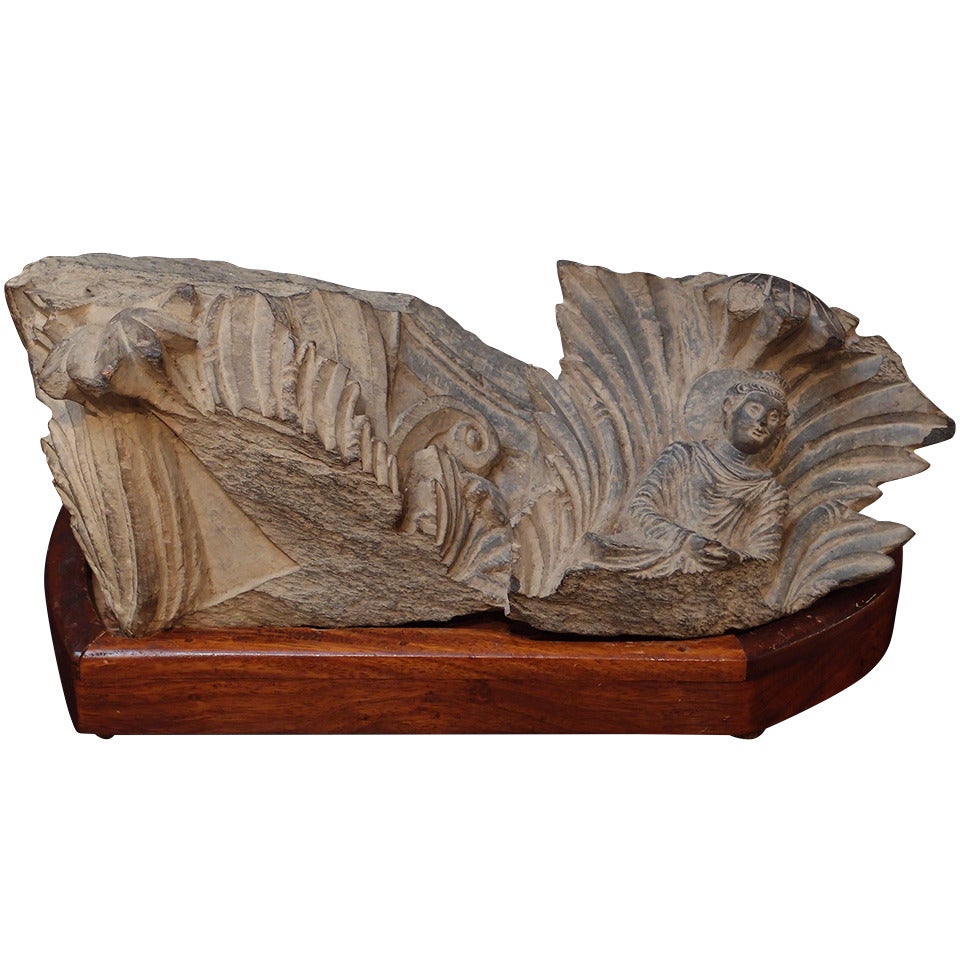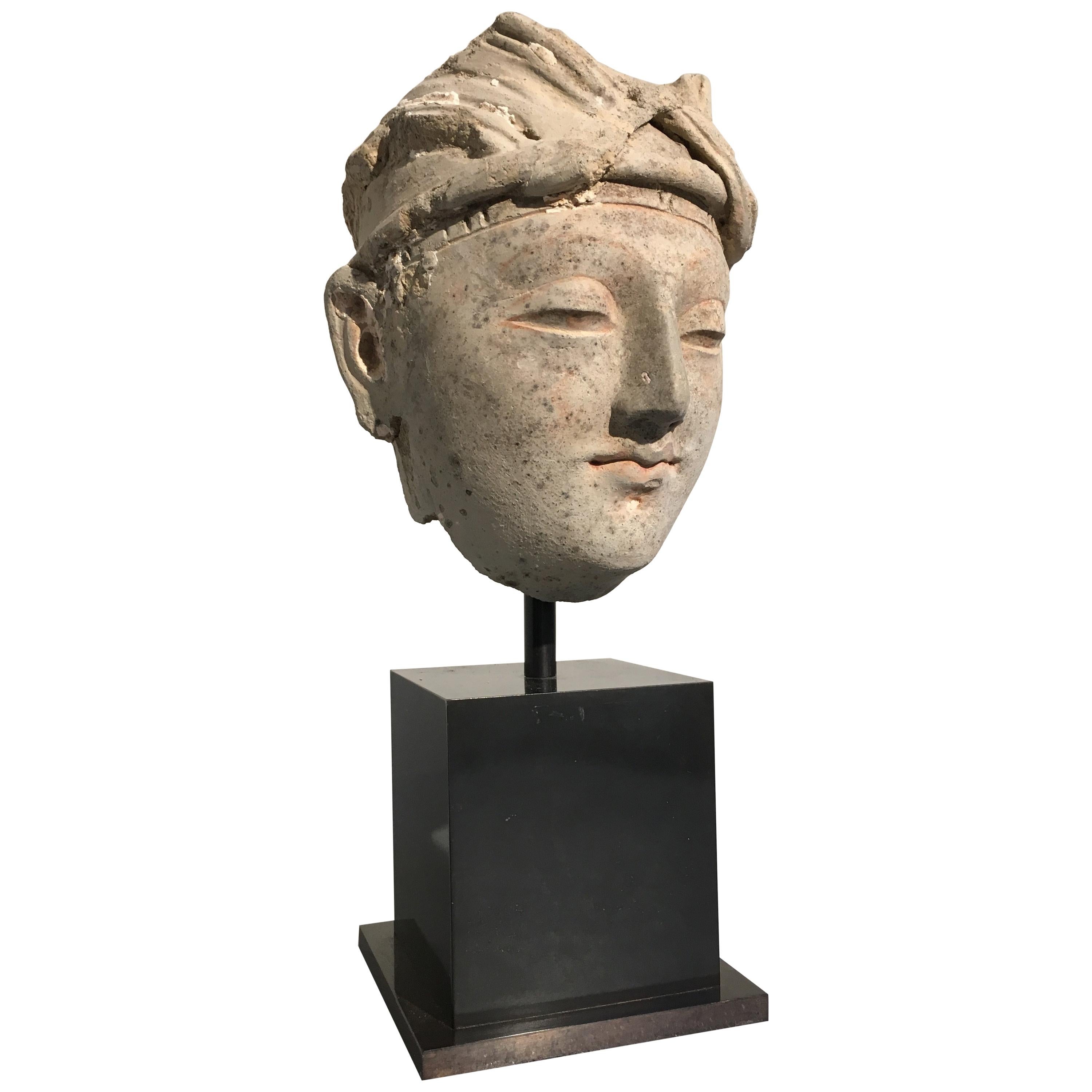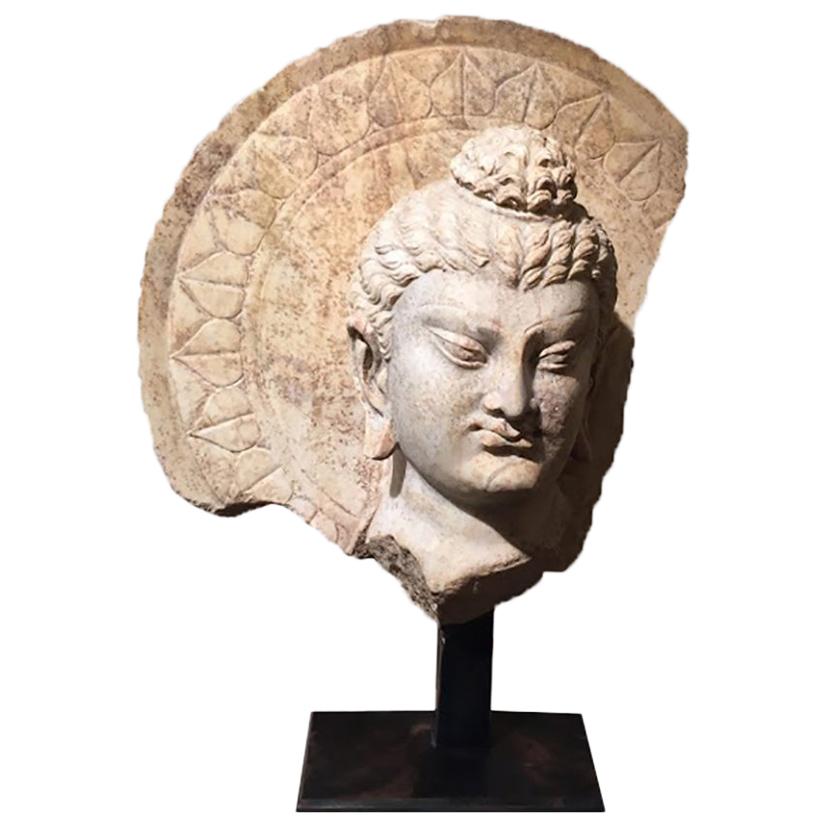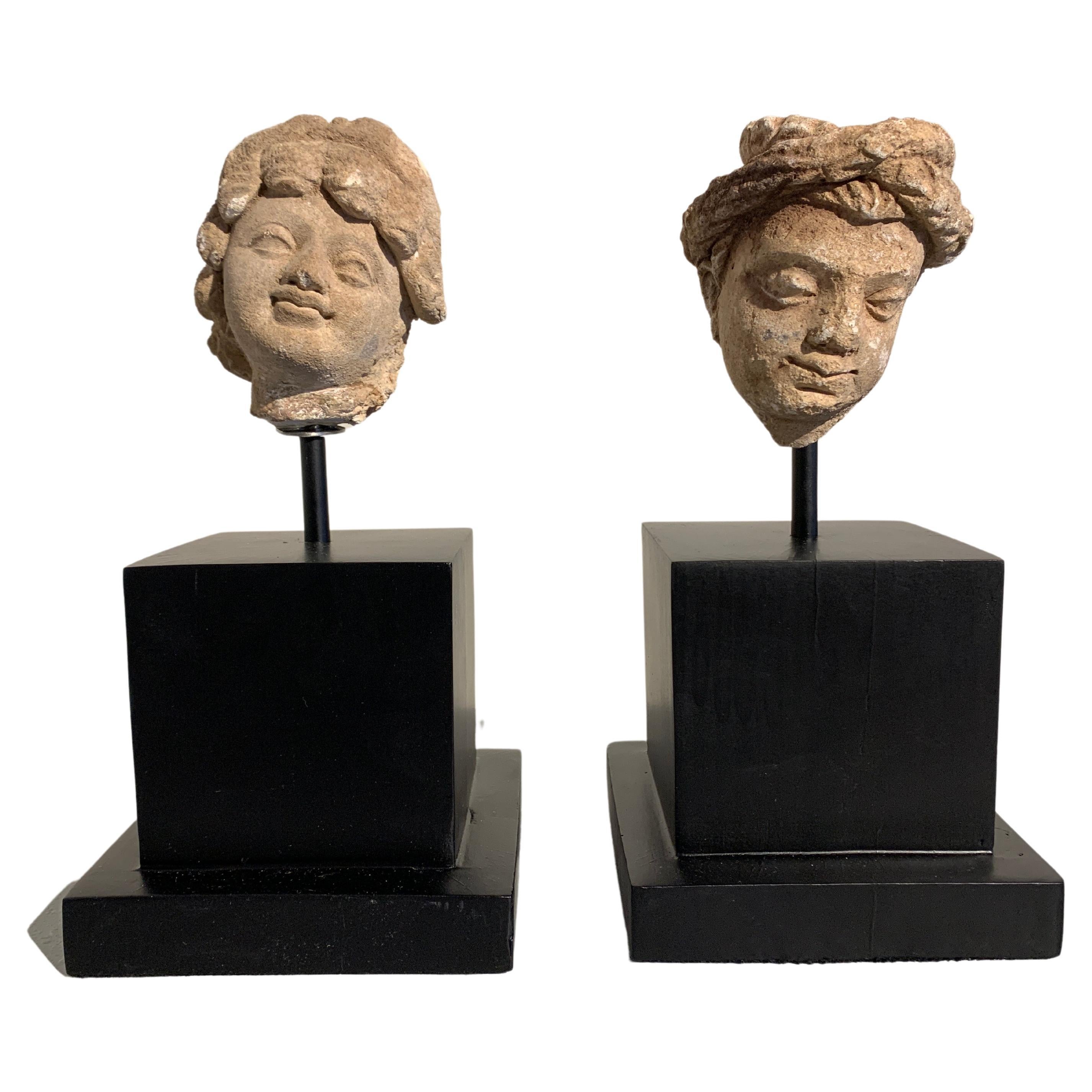Items Similar to A Fine Gandharan Head of a Buddha
Want more images or videos?
Request additional images or videos from the seller
1 of 12
A Fine Gandharan Head of a Buddha
About the Item
A Fine Gandharan Head of a Buddha
Stucco with ‘earth pigment’
Some old ‘restoration’ to the nose
Afghanistan
3rd Century AD
Size: 26cm high, 14.5cm wide, 14cm deep - 10¼ ins high, 5¾ ins wide, 5½ ins deep
Provenance:
Michael Dollard, New York, USA
John Stephens, circa 1986, London, UK
Thence by descent, circa 2016
Brussels Private collection
- Dimensions:Height: 10.25 in (26.04 cm)Width: 5.75 in (14.61 cm)Depth: 5.5 in (13.97 cm)
- Materials and Techniques:
- Place of Origin:
- Period:
- Date of Manufacture:3rd Century AD
- Condition:Repaired: light repair on the nose. Wear consistent with age and use.
- Seller Location:London, GB
- Reference Number:1stDibs: LU9363239382542
About the Seller
No Reviews Yet
Vetted Seller
These experienced sellers undergo a comprehensive evaluation by our team of in-house experts.
Established in 1989
1stDibs seller since 2023
- ShippingRetrieving quote...Ships From: London, United Kingdom
- Return PolicyA return for this item may be initiated within 14 days of delivery.
More From This SellerView All
- An Over Life-Size Powerful Roman Male Portrait Head of Constantine the GreatLocated in London, GBAn Over Life-Size Powerful Roman Male Portrait Head of Constantine the Great (c.272 - 337) Wearing the ‘Imperial Oak Wreath’ the decorative border of his ‘tunic’ can still be clearly seen on the left hand side Marble Italy Early 4th Century AD SIZE: 38cm high, 24.5cm wide, 25cm deep - 15cm high, 9¾ ins wide, 10 ins deep PROVENANCE: Ex Private collection, Cambridge, England note: For a very similar over life-size portrait head of Constantine I (the Great) wearing an identical wreath dating from the early 4th century AD see: Yorkshire Museum, York, inv. no. ‘YORYM’ 1998.23. Found in ‘Eboracum’ (York) in 1823 LITERATURE: Rinaldi Tufi, S., Yorkshire. ‘Corpus Signorum Imperii Romani (Great Britain)’; vol. 1, fasc. 3, Yorkshire. Oxford University Press, 1983; 23, no. 38, pl. 12 In AD 306, Constantine was hailed emperor in the Roman city of York; he was the first emperor to convert to Christianity. Born in Naissus, the son of Flavius Constantius, and Helena, a woman of low birth and a christian. Following his campaigns in the eastern provinces, Constantine was recalled in 305 AD to fight alongside his father in the province of Britannia. After his father’s death in 306 AD, Constantine was acclaimed as ‘imperator’ by his army at Eboracum (York) eventually being declared victorious after the civil wars against emperors, Maxentius and Licinius to become sole ruler of the Roman Empire in 324 AD. Constantine’s Christian belief cannot be underestimated, establishing the foundations of ‘Western Christendom’. In 313 AD he was influential in the proclamation of the ‘Edict of Milan, declaring tolerance of Christianity within the Roman Empire. The Church of the Holy Sepulchre, the purported site of Jesus’s tomb...Category
Antique 15th Century and Earlier Italian Classical Roman Antiquities
MaterialsMarble
- A Rare and Important Late Roman Marble ColumnLocated in London, GBA Rare and Important Late Roman Marble Column With a fluted spiral central column shaft rising to a carved integral capital with Corinthian ‘acanthus’ leaf decoration, the base with ...Category
Antique 15th Century and Earlier Greek Antiquities
MaterialsMarble
- A Finely Carved Gandhara Head of ‘Atlas’Located in London, GBA Finely Carved Gandhara Head of ‘Atlas’ Grey schist India 3rd - 4th Centuries AD SIZE: 19cm high, 11cm wide, 12.5cm deep - 7½ ins high, 4¼ ins wide, 5 ins deep References Pratap...Category
Antique 15th Century and Earlier Indian Antiquities
MaterialsSchist
- A Heavy Cast Gilded Bronze Right Hand of the Buddha ShakyamuniLocated in London, GBA Heavy Cast Gilded Bronze Right Hand of the Buddha Shakyamuni Showing the gesture of meditation Old smooth dark patina with remains of gilding China 15th Century - Early Ming Dynasty (1368 - 1644) SIZE: 25cm long, 13.5cm wide, 10cm deep – 9¾ ins long, 5¼ ins wide, 4 ins deep The forefinger and little finger of this hand are slightly lifted away from the others and are making the gesture of meditation, which is associated with the moment of the Buddha’s enlightenment. From the position of the fingers it is probable that this is the right hand of a monumental, double life size, image of the Buddha seated in meditation. Provenance: Ex Finch and Co...Category
Antique 15th Century and Earlier Chinese Sculptures and Carvings
MaterialsBronze
- A Fine Flemish Carved Figure of a ManLocated in London, GBA Fine Flemish Carved Figure of a Man Attributed to Henrick Douverman (c. 1480 - 1543) (sometimes known as Heinrich Douwermann) Wood (oak) Flemish Early 16th Century SIZE: 28cm high...Category
Antique 16th Century Dutch Figurative Sculptures
MaterialsWood
- European Carved Limestone Celtic Votive Head of a Male WarriorLocated in London, GBA Large European Carved Limestone Celtic Votive Head of a Male Warrior Wearing a Typical Flowing Moustache Small Beard and Curling Locks of Hair Stiffened with Lime Wash the Slit Mouth Open as if in Command Circa 1st Century BC - 1st Century AD Size: 31cm high, 22cm wide, 25cm deep - 12¼ ins high, 8¾ ins wide, 9¾ ins deep / 42cm high - 16½ ins high (with base) From about 500 BC, first Greek and later Roman historians mention peoples living in a large area of non-mediterranean Europe as Celts. These classical chroniclers seem to have recognised these communities as having sufficient shared cultural traditions to justify their being given a common name, ‘Keltoi’ by the Greeks, and ‘Celtae’ or ‘Galli’ by the Romans. The earliest allusions to Celts by such Greek historians as Herodotus (485 - 425 BC) were followed by Polybius (200 - 118 BC) and Livy (59 BC - AD 17) who discuss the expansion of the Celts from their central European homelands during the 4th and 3rd centuries BC. They document the presence of Celts in Spain, France, Italy, Greece and Asia Minor, specifically central Turkey. They testify to the successful Roman resistance to the Celts in Italy, after the ignominy of the sacking of Rome by them in 387 BC, and describe the huge defeat suffered by the Celts at the battle of Telemon in northern Italy in 225 BC. The Celts in Greece who sacked the sacred site of Delphi in 279 BC were defeated by King Antigonos Gonatas of Macedon in 278 - 277 BC and in Turkey by Altalus of Pergamon in 240 BC. The Celts in Spain fell under the shadow of Rome from 2nd Century BC and the Celtic heartland known by the Romans as ‘Gaul’ was conquered by the Romans under Julius Caesar in the mid 1st Century BC. Britain was not referred to as Celtic by the ancient historians, but Caesar recognised the close similarities between Britain and Gaul especially in their political organisation. Tacitus (55 - 120 AD) and others chronicled the conquest of Britain between 43 and 84 AD some mentioning the fierce nature of the Celts who went into battle naked. Celtic art therefore belongs to an artistic tradition in the early history of Europe which is no less important than that of the classical world. Art was central to Celtic identity and was closely related to the objects which it decorated. The Celts were used to seeing art as an integral part of their everyday lives. Provenance: Ex Finch and Co...Category
Antique 15th Century and Earlier European Busts
MaterialsLimestone
You May Also Like
- Gandharan Stucco Head of the Buddha, 3rd-5th CenturyLocated in Austin, TXA sublime Greco-Buddhist stucco head of the Buddha, ancient region of Gandhara, circa 3rd-5th century. A fragment of a larger statue, the Buddha's face...Category
Antique 15th Century and Earlier Pakistani Figurative Sculptures
MaterialsStucco
- Gandharan Small Stucco Buddha Head, Style of Hadda, 5th-6th CenturyLocated in Austin, TXA lovely small stucco head of the Buddha, ancient region of Gandhara, probably Hadda, 5th to 6th century, modern day Afghanistan. Beautifully rendered, the small Gandharan Buddha...Category
Antique 15th Century and Earlier Afghan Antiquities
MaterialsStucco
- Gandharan Column Capital Fragment with an Image of the BuddhaLocated in Austin, TXA bold and expressive Gandharan carved gray schist column capital fragment, circa 2nd - 3rd century, ancient region of Gandhara. The fragment of a c...Category
Antique 15th Century and Earlier Pakistani Hellenistic Sculptures
MaterialsSchist
- Gandharan Stucco Head of a Donor, 4th-5th CenturyLocated in Austin, TXA sublime molded stucco head of a young male donor from the ancient region of Gandhara, 4th-5th century. The youthful nobleman sculpted in an idealized...Category
Antique 15th Century and Earlier Pakistani Hellenistic Sculptures and Ca...
MaterialsStucco
- Marble Head of Buddha with RingLocated in Coral Gables, FLThis marble head of Buddha is of Gandhara culture, Pakistan, 6th century. This piece is part of designer John Brevard's personal collection and has been...Category
Antique 15th Century and Earlier Pakistani Other Antiquities
MaterialsMarble
- Pair Gandharan Stucco Heads of Donors, 3rd-5th Century, GandharaLocated in Austin, TXA charming pair of Gandharan molded stucco heads of donors, ancient region of Gandhara (modern day Pakistan / Afghanistan), probably Taxila, circa 3rd-5th century. The two heads most likely represent donors. Donors to temples would often have their images enshrined in the artworks of temple walls in thanks for their support. One head portrays a youthful figure with a plump, smiling face, and full head of hair arranged in fat curls and secured by a headband. The androgynous figure...Category
Antique 15th Century and Earlier Pakistani Hellenistic Antiquities
MaterialsWood, Stucco
Recently Viewed
View AllMore Ways To Browse
Ichimatsu Japan
Free Trade
Wood Stool France
Pair On Consoles
Small Lable Lamps
Small Gold Dining Room Table
Unique Jar
Italian Chandelier In Opaline Glass
Garden Table France
Cabinets That Are Bars
Bronze Pendant Light Chain
Brown Cupboard Two Doors
Mirrored Glass Console
Brass Plated Glass Top
Bow Motif
Law Lamp
Italian Multi Light
Old Rococo Furniture
